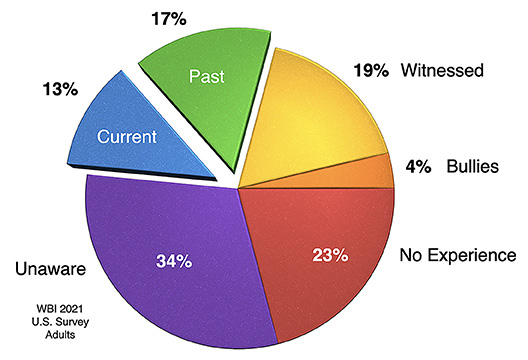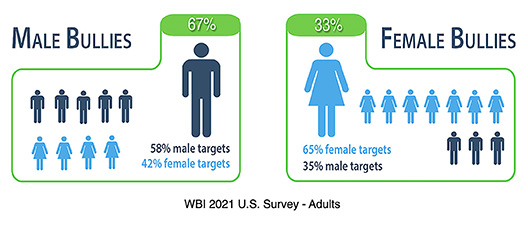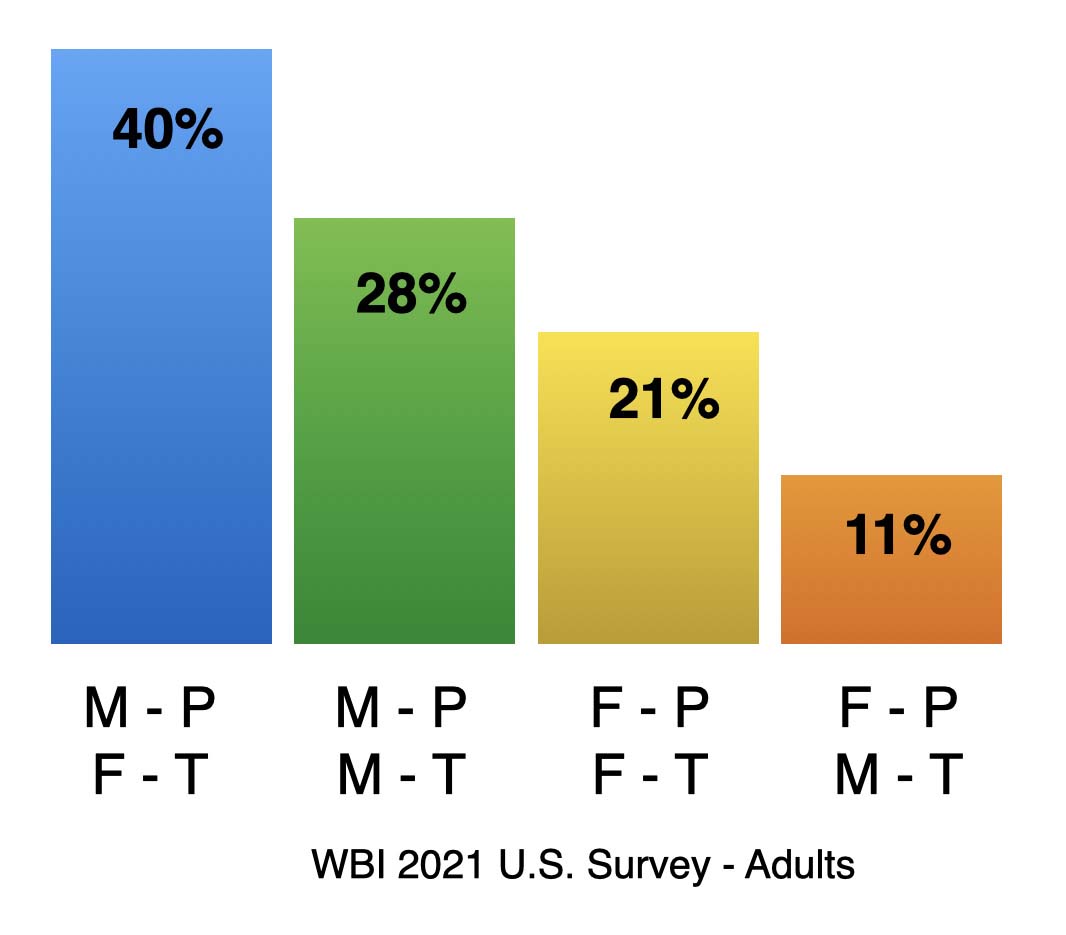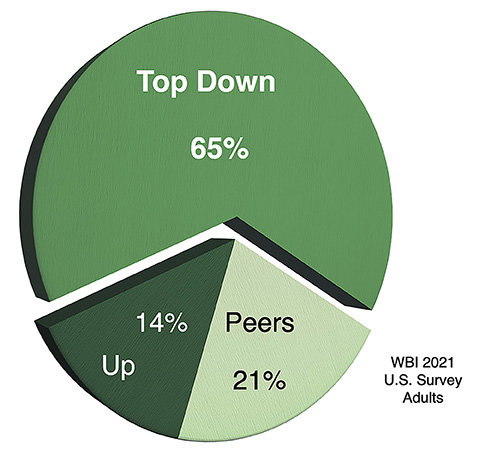“It is incredibly important to your mental health to remember
that YOU ARE NOT ALONE.”
WBI U.S. Workplace Bullying Survey – 2021

The evidence comes from our WBI national scientific surveys. By relying on Zogby Analytics to run our surveys, we have an ability to draw conclusions about all adult Americans. Respondents span all four geographic regions and balance gender and race according to actual proportions in the population.
To get the prevalence rate in 2021, we asked:
“At work, what has been your personal experience with the following types of repeated mistreatment: abusive conduct that is threatening, intimidating, humiliating, work sabotage or verbal abuse?”
The Graph Data
As the graph shows, 13% are being directly, currently bullied. Another 17% have been directly bullied. Most research about bullying and its effects on people are based on studies of those who report being bullied (or score as bullied on a valid & reliable academic scale). Witnesses who saw a coworker being bullied are assumed to be vicariously (indirectly) bullied. There is some research showing that witnesses become depressed, too.
Affected People
When you sum the groups who directly experienced bullying and
those who witness it without having personal experience themselves,
the number of affected American workers is 79.3 million.

Gender & Bullying
Men are the vast majority of bullies.
However, women are not completely off the hook.
They represent 33% of all perpetrators.


Finally, from the gender results, we see that 61% of cases involve same gender pairs. Those are the cases that are very difficult to rectify using the legal system or employers’ nondiscrimination policies. It freezes everyone.
Rank of Bullies
The majority of bullies are bosses. In 65% of cases, they outrank their targets. Another 21% of the bullying comes from peers, coworkers at the same level in the organization. Remarkably, a fearless 14% of bullies bully up the ladder. This illustrates that the perception of power is personal and less dependent on true rank in the organization. If the bully believes she or he has legitimate leverage (power) to dominate another person regardless of position or job title.

Support for a Law
Look above at the wording of the prevalence question. Given the definition of abusive conduct (instead of using the actual term workplace bullying) found there, we asked on the national survey if there would be support for a law to prohibit such conduct. Support was strong, totaling 90%.

In case you may not know, we have been working since 2003 to enact such a law in U.S. states — the Healthy Workplace Bill. It has been introduced in 32 states multiple times but contemporary legislators are hostile to extending protections to workers in employment law. Sadly, the U.S. remains the only western industrialized nation to not have bullying addressed either in occupational safety and health regulations or statutory law.

